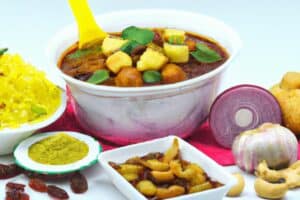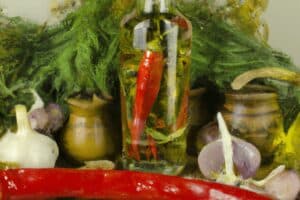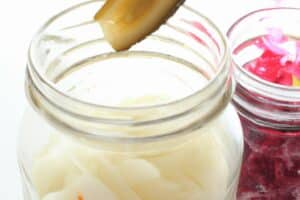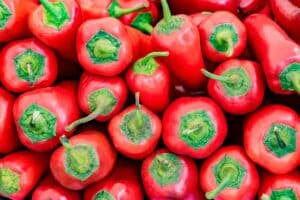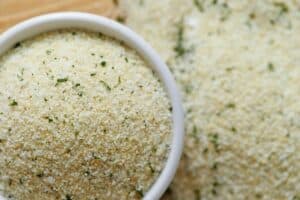When you’re in a pinch, and you need saffron but don’t have any on hand, turn to turmeric, safflower, paprika, annatto, or food coloring to complete a dish. You might even find some success by creating a subtle blend of more than one potential saffron alternative.
Saffron is a relatively expensive spice believed to have originated in Iran or Crete. But, its history is a bit murky, and other regions may have also been early adopters of saffron’s seasoning and coloring properties.
It lends a sunlight coloring to recipes like lamb tagine or chicken biryani, and its flavor is earthy and mellow, though distinctly floral.
It is sourced from the flowers of Crocus Sativus, which is also simply referred to as saffron crocus.
The first step in creating the saffron we use as a seasoning requires plucking bright red threads of the stigma and styles from the Crocus Sativus flowers. They are then dried and used by cooks to add color and flavor to their dishes.
The specifics of a given recipe often dictate which saffron replacement might be best. So our list of saffron substitutes incorporates a few options.

5 Recommended Saffron Substitutes
Saffron is a unique spice, so it’s hard to emulate exactly. However, these top five saffron substitutes each offer some similarities to saffron.
They all have a unique flavor, color, availability, and price. We’ve also noted some recipes you can try with these spices.
Turmeric

Saffron brings both flavor and color to dishes. So does turmeric. And since they both have a bit of a golden essence, you can use saffron for coloring dishes that call for the addition of saffron.
Turmeric is similar enough to saffron that some imitation spices use it as a substitute or blend it with a bit of saffron to cut their costs. But, saffron comes from a flower, and turmeric is more akin to a type of ginger.
So while saffron’s flavoring is mild and almost airy, turmeric is more astringent and assertive.
So, while not ideal, turmeric on its own is a decent saffron substitute. But it might be best when combined with another saffron alternative, like paprika.
For best results, consider mixing one teaspoon of turmeric with two teaspoons of paprika. This combination yields both the colors and flavors you need for a saffron replacement in your kitchen. Just be careful because a little bit may go a long way!
In summary, turmeric has a flavor that makes it a potential saffron substitute. However, its availability, low cost, and coloring are what make it one of the best saffron replacements.
Turmeric is delicious on scrambled eggs, risotto, paella, and rice. You can use it as a substitute for saffron in dishes like soups or cooked greens like greenbeans. Try a ginger and turmeric carrot soup, for example.
Safflower
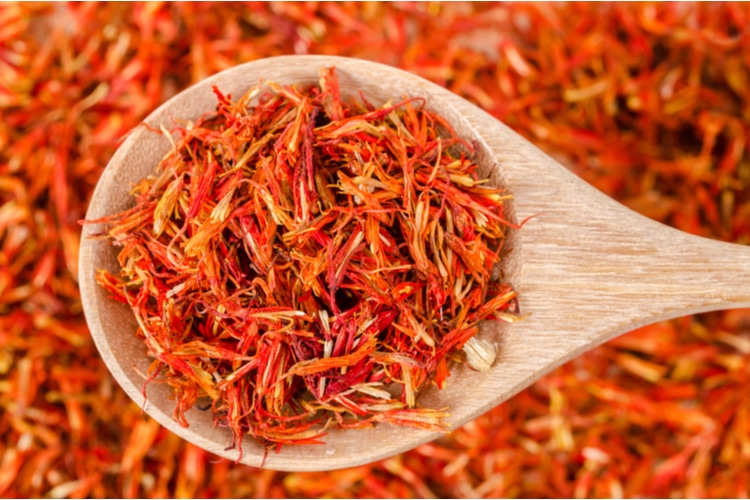
At harvest time, safflower’s native form has a similar appearance to saffron. They both come from bright flowers.
But that’s about the end of their similarities. Safflower comes from the dried petals of flowers similar to daisies. We already know that saffron comes from the stigmas of a different flower.
But safflower also has a bright reddish appearance and brings a golden hue to a dish. It also has a mild taste that is reminiscent of saffron, if not quite as refined.
But where safflower becomes very appealing is in its price. Where safflower costs about $4 per pound normally, a single gram of saffron can cost more.
Safflower has the coloring you need for a decent saffron substitute, and its taste is neutral, so you won’t ruin the flavors of a dish by using it. You should use a similar amount of safflower as an alternative spice, so if a recipe calls for a pinch of saffron, use a similar amount of safflower.
Since it’s extremely affordable, you can also experiment a bit to find the right ratios for you and your flavor preferences.
Safflower is a natural healing element, as it provides a prevention against heart disease. Try using it in recipes such as a stir-fry, deep-fried chicken, and for common saffron dishes such as chorizo and risotto.
Paprika
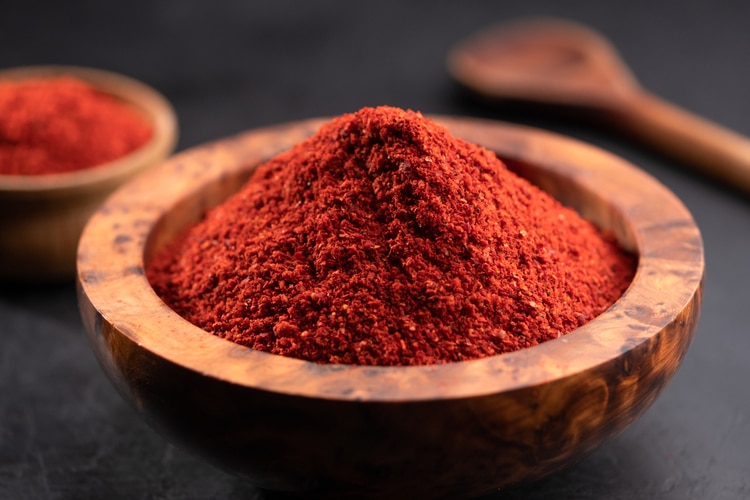
Paprika is typically a blend of mild and sweet peppers that have been dried and milled into a fine reddish powder. Its coloring can vary depending on the blend of peppers it was sourced from, whether it is roasted or not, and other factors in its handling.
Its coloring is similar to saffron, but where saffron leaves a recipe looking golden or even with a rust-coloring, paprika can turn things bright red, even in small quantities.
Plus, depending on the exact mix, paprika can range from fairly sweet to quite spicy, adding a bit of unpredictability to each package’s flavor. So, it’s best to use paprika sparingly as a saffron substitute, and only after you have tasted a little bit.
You can also get great results from blending a bit of paprika with turmeric, as we mentioned above. You should use a ratio of about two parts paprika to one part turmeric for the best of both worlds.
This combination is affordable, available in most kitchens, and delivers both the colors and flavors that make it among the best substitutes for saffron.
Be a little bit careful, though, because some blends of paprika can be quite strong, and you don’t want to overdo it and add too much heat or pepper flavor to a dish that requires subtle flavors. Strong paprika could easily overpower milder herbs or spices.
Paprika is delicious in pasta, on chicken, and for adding an extra kick to any dish. You can also use it for curry and spicier foods. Sweet paprika is also available at some stores, and it adds a less spicy touch to any recipe.
Annatto
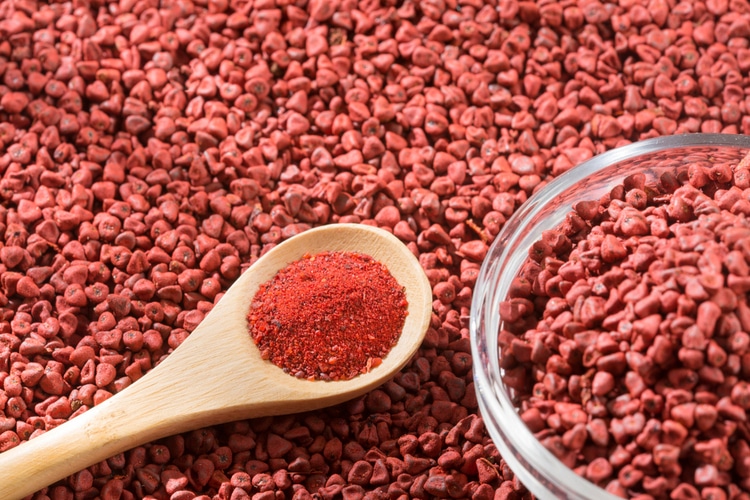
Annatto comes from the seeds of the achiote tree. It’s indigenous to Central and South America and typically comes in either a seed form or a dried brick of powder.
Its color and flavor are close to those of saffron, and it’s also very affordable. Some people even call annatto a “poor man’s saffron” due to its reputation as a substitute for the more affordable spice.
Since it’s quite common in Central America, some also call annatto Mexican saffron. If you find it in seed form, you will have to grind it into a powder to easily mix it into your dish as a saffron substitute.
Alternatively, you can mash the seeds into a bit of oil or water with a mortar and pestle to create a paste. You can also just put some seeds in a blender or food processor with a dash of water.
Be careful, though, because annatto can be quite strong, with a flavor that is assertively earthy. It bears some similarity to the taste of a mushroom.
So, it’s a decent substitute for the taste of saffron and also offers the color notes that can make it viable in a dish that calls for the more expensive spice. It’s also pretty cheap.
However, most kitchens that don’t cook South or Central American cuisine probably won’t have a brick of annatto in the cupboard.
We suggest using annatto for coloring soups, making stews, or creating your own seasoning. It will add a deep reddish orange color to anything you cook, like saffron. It also enhances already existing flavors.
Food Coloring
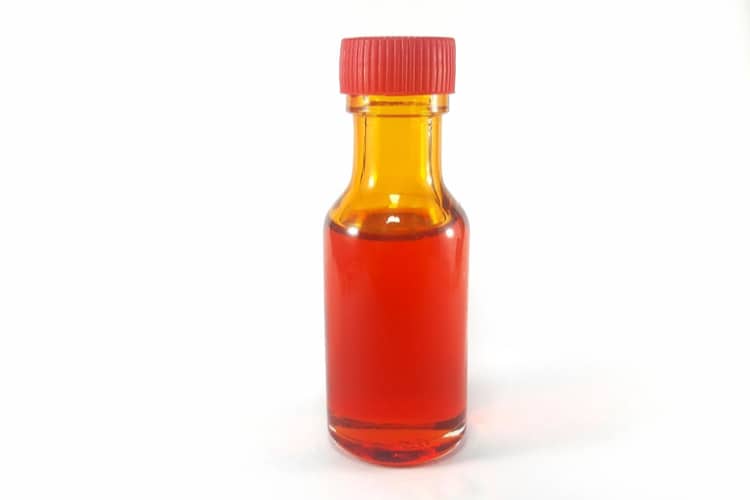
Food coloring offers yet another way to mimic the coloring that saffron lends to dishes. By blending a drop or two of yellow and red coloring in some water, you can create almost the exact hue that a dose of saffron lends to a recipe.
Since food coloring is also relatively inexpensive, you can do some trial and error in a separate bowl to get the right mix for your dish before mixing it in. However, food coloring doesn’t have any flavor, so you won’t get the saffron notes you want for your dish with this saffron alternative.
However, you also won’t be adding any flavors that might upset the balance of the recipe either.
Sometimes people use the phrase that the best ability is availability. That’s also true in the contest of best saffron substitute.
Almost every kitchen has some red and yellow food coloring lurking in a cabinet. So it may be the best substitute for saffron that you have on hand at any given moment.
You can use food coloring in any dish. You can also choose the color. To best mimic saffron, try an orange or red food coloring.
If you want to still add an extra taste to the meal, you can try one of the saffron substitutes listed above. Any will add a delicious kick to your meal if you’re unable to purchase or can’t find the original ingredient.
Remember, when using food coloring, don’t use too many drops. Start with one or two drops, and mix it to see how it looks. You don’t want your food to turn bright orange! Or, maybe you do. That’s up to you.

